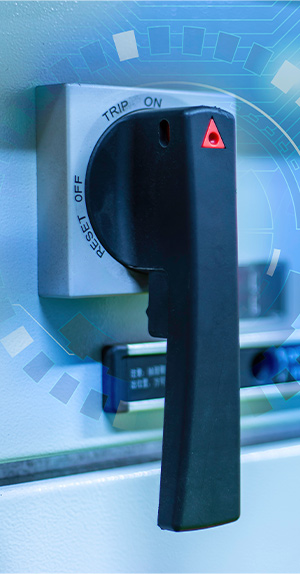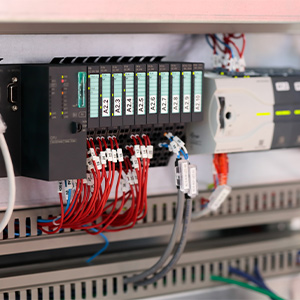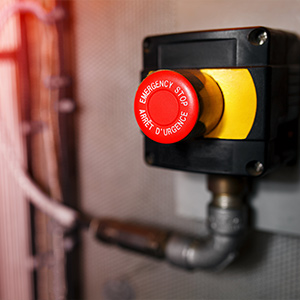A Motor Protection Circuit Breaker is a simple electromechanical device that protects an individual electric motor against overload, fluctuations in input current or unscheduled interruptions to the main circuit. This includes line faults and phase loss or imbalance in three phase motors. A Motor Protection Circuit Breaker saves on space and costs, providing fuseless protection that switches motors off instantly to prevent damage. It will also safely disconnect the current in the event of a short circuit. It will usually be equipped with a thermal delay to allow the motor to cool down, and sometimes with automatic reconnection when it has done so.
How Does a Motor Protection Circuit Breaker Work?
The MPCB is constructed with three main functions, specially designed for the protection of electric motors.
- Thermal protection guards the motor against overload. An expanding and contracting contact will disconnect the motor if it detects an excessive electric current. A delayed response is built in to allow for the high inrush currents that occur when a motor first starts up, but if this inrush is extended for too long and the motor fails to start, the thermal contact will trip.
- Magnetic protection guards against dangerous electrical faults and short circuits, instantaneously disconnecting the current as soon as a fault is detected.
- Phase protection guards against phase loss or imbalance. Three-phase circuit motors can only function properly with balanced voltages in their three live conductors. More than 2% imbalance in the phase voltages will reduce the motor’s efficiency and service life, while a sudden loss of one of the phase voltages will cause even more damage. In this event, the motor will continue to run, but the current in the other two phases will exceed the rated value and will very likely burn out the motor windings. An MPCB constantly measures the variations in phase voltages, and will disconnect the motor immediately a loss or imbalance occurs.
A manual interrupt mechanism is also incorporated in the MPCB, which allows electric motors to be disconnected manually for standard maintenance or replacement.

Motor Protection Circuit Breakers vs. Motor Circuit Protectors
There are two main reasons that excess current occurs; overloads, and short circuits. Overloads can occur when electrical equipment draws only slightly more current than it is rated for, but this can build up over time. Overloads do not cause damage when they first occur, but only when left unchecked. Conversely, short circuits occur very rapidly, and can produce currents that are far in excess of a full rated load. For this reason, short circuits must be dealt with immediately.
Differentiating between a Motor Circuit Protector and a Motor Protection Circuit Breaker is really splitting hairs, since an MCP is effectively just a special type of circuit breaker that only protects against short circuits. In order to protect against overloads when using an MCP it is necessary also to install an overload relay. These are common in industrial Motor Control Centre assemblies, where space is not such an issue and multiple components are collected together. MCPs are also only generally used in branch circuits, while MPCBs are more commonly used in feeder circuit,
MPCBs are preferred for low voltage switchgear, because they combine both types of protection in one thermal-magnetic circuit breaker, and don't require additional relays. They also cut down on reset time after a short circuit or overload, reducing overall operational downtime. Motor Protection Circuit Breakers come in a wide variety of sizes and settings which allows maximum flexibility in installation. A lot of low voltage control gear is now also constructed in modules, so that a number of MPCBs can be integrated into a compact unit with other devices.




